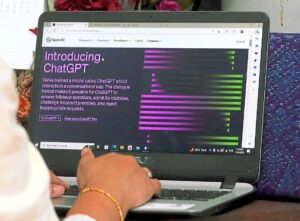
AS a father of two teenage boys aged 16 and 14, I cannot read the news of radicalised minors without feeling alarmed and deeply concerned.
The recent case in Singapore, involving a 14-year-old, third-year secondary school student, is particularly striking.
Security officials reported that the boy was influenced by a “salad bar” of extremist beliefs: far right, far left, Islamic State (IS) propaganda and the incel subculture.
He is not much older than my youngest child who, like millions of teenagers, spends hours on gaming, social media and online community platforms that quietly shape their identity, sense of belonging and moral compass.
For those unfamiliar, incel stands for “involuntary celibate”. These online communities, comprised mostly of young men, express deep resentment toward women and society for their sexual frustrations.
From a gender perspective, incel ideology feeds on what scholars call wounded masculinity. Many boys today struggle with identity in a world where traditional markers of male success – financial stability, social recognition, romantic relationships – are increasingly uncertain.
Online platforms amplify these feelings, creating spaces where humiliation and anger are validated, sometimes evolving into misogyny or even violence.
The Singapore case illustrates how modern radicalisation can be complex and hybrid. Extremist content no longer fits neatly into a single category. Instead, it blends political resentment, religious narratives and gender-based grievances into a mix that can appeal to digital native teenagers.
These hybrid messages exploit vulnerabilities in identity formation, offering recognition, belonging and purpose; things many adolescents are still searching for. Indonesia faces a similar challenge.
In Pemalang, Central Java, a 14-year-old boy became involved in online extremist networks connected to a suspect arrested in Tolitoli, Central Sulawesi.
What started as casual exposure on Facebook escalated to active participation in closed WhatsApp groups, where he even became an admin sharing IS propaganda.
He is one of 14 minors identified in 2024 as being drawn into extremist activities. Two are being prosecuted for serious involvement, including attempts at bomb making, while the others are receiving support through family, school and community-based interventions.
From my perspective as both a father and a scholar who has studied radicalisation in South-East Asia for more than two decades, two dynamics stand out.
First is the digital vulnerability of minors. Online spaces are no longer just entertainment; they are formative environments where adolescents negotiate their identity, values and social standing.
The United Nations Convention on the Rights of the Child (CRC) and Unicef emphasise that child protection must extend to all environments, including the online world. Extremists exploit these spaces, offering recognition, belonging and purpose tailored to teenagers’ developmental needs and anxieties.
Second is the societal response. Too often, minors involved in extremist networks are seen primarily as security threats, and only secondarily as children in need of care.
Criminalisation should be a last resort. The CRC and Unicef’s child protection guidance stress that children caught in these networks are victims of exploitation and require rehabilitation, not punishment.
This includes counselling, digital literacy training, family engagement and social reintegration, which help children regain perspective and prevent further harm.
The psychological dimension is also critical. Adolescents are highly susceptible to narratives that simplify complex realities and offer immediate solutions.
Whether through religious ideology, incel forums or political extremism, radicalisation provides a clear, if dangerous, pathway to identity and agency.
This brings me to the personal side of the story. My sons are digital natives. Their friendships, role models and moral compass are increasingly mediated through screens.
My greatest fear is not that they will encounter extremist content; it is that they might feel more understood by strangers online than by me.
If a child senses that outsiders offer more recognition, guidance or validation than parents or teachers, that gap is easily filled by ideologies that exploit anger, fear or insecurity.
That is why investing in personal bonding is no longer optional; it is essential.
Protecting children in the digital age does not mean monitoring them constantly or forbidding online activity. It means entering their worlds with curiosity rather than judgment.
Ask about the games they play, the YouTubers they follow or the TikTok trends they enjoy. Listen to what excites, worries or frustrates them.
Meaningful conversations and shared activities build trust, empathy and resilience. My research and interviews with former extremists show that lack of recognition and belonging in early adolescence is a key factor that recruiters exploit.
From a policy perspective, the solution extends beyond families. Online radicalisation cannot be countered solely through content moderation or law enforcement.
It requires a multilayered strategy combining family engagement, educational programs, psychosocial support and community-based prevention.
Schools, religious institutions and parents all play a role in providing children with alternative narratives, emotional support and safe spaces to explore ideas.
Early identification of risk factors, coupled with supportive interventions, can reduce the allure of extremist ideologies, including those that exploit wounded masculinity.
Psychologically, adolescents need guidance to navigate identity, belonging and gender in a world dominated by online influences. Boys, in particular, should be encouraged to develop emotional literacy, empathy and a healthy understanding of masculinity.
Social and emotional skills, nurtured within family and school environments, can make young people less susceptible to manipulative narratives that prey on anger, humiliation or isolation.
The cases in Singapore and Indonesia also highlight the importance of community and institutional collaboration.
While parental engagement is the first line of defence, schools, social workers and specialised agencies like Singapore’s Religious Rehabilitation Group (RRG) provide the professional expertise necessary to handle complex cases.
Families are not expected to navigate this alone, and early reporting, although emotionally difficult, can prevent long-term harm.
Ultimately, protection in the digital age is not about building walls around children; it is about building bridges. It is about listening, understanding and guiding them before they seek belonging in dangerous communities.
The fight against online radicalisation begins at home but is reinforced when families, communities and institutions work together. The vulnerability of minors online is a shared responsibility.
Singapore’s approach, with its emphasis on rehabilitation, early reporting and child protection, demonstrates that even in complex cases, there is hope.
Children, no matter how misguided, still carry immense potential. Our task is to ensure that they realise it safely, and that no child slips through the cracks of a digital world full of influences beyond our immediate control.
Safeguarding a child’s imagination, attention and future begins not with fear or punishment, but with presence, care and structured guidance: from home, school and society alike. — The Jakarta Post/ANN
Dr Noor Huda Ismail is a visiting fellow at the S. Rajaratnam School of International Studies (RSIS) at Nanyang Technological University.






